Fractional Indices | GCSE Maths
In this lesson, we will discuss what Fractional Indices are, how they are simplified, and the logic behind negative fractional indices. We will also walk through step-by-step examples to help you understand the concepts and solve some GCSE Past Paper Questions
What Are Indices?
Indices (also known as exponents) allow us to write repeated multiplication in a simpler way. For example:
- x2 means “x multiplied by itself” , or “x times x”.
- x3 means “x multiplied by itself three times” , or x times x times x.
- In general, “xn means you multiply x by itself n times”.

This idea is fundamental to working with more advanced topics like fractional indices.
What Are Fractional Indices?
Fractional indices are Exponents written as fractions, for example,
xm/n
They combine the ideas of Powers and Roots into a single operation:
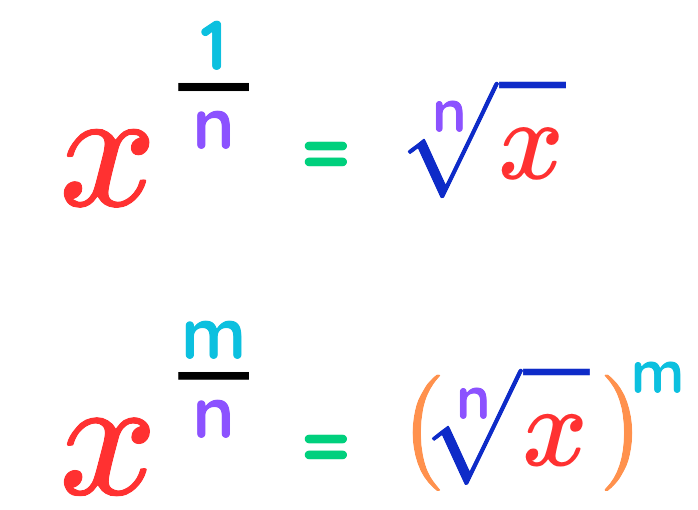
This means you take the n-th root of x first, then raise the result to the power of m.
Which is the same as raising the n-th root of x to the power m
- Numerator (m): Indicates the power (How many times x is multiplied by itself).
- Denominator (n): Indicates the root (Which root to take of x).

Some examples of fractional exponents that are widely used are given below:

Steps for Simplifying Fractional Indices
Step #1: Identify the Fractional Exponent
- If you see xm/n, recognize that:
- m is the power.
- n is the root (i.e., the n-th root).
Step #2: Rewrite in Root Form
Convert
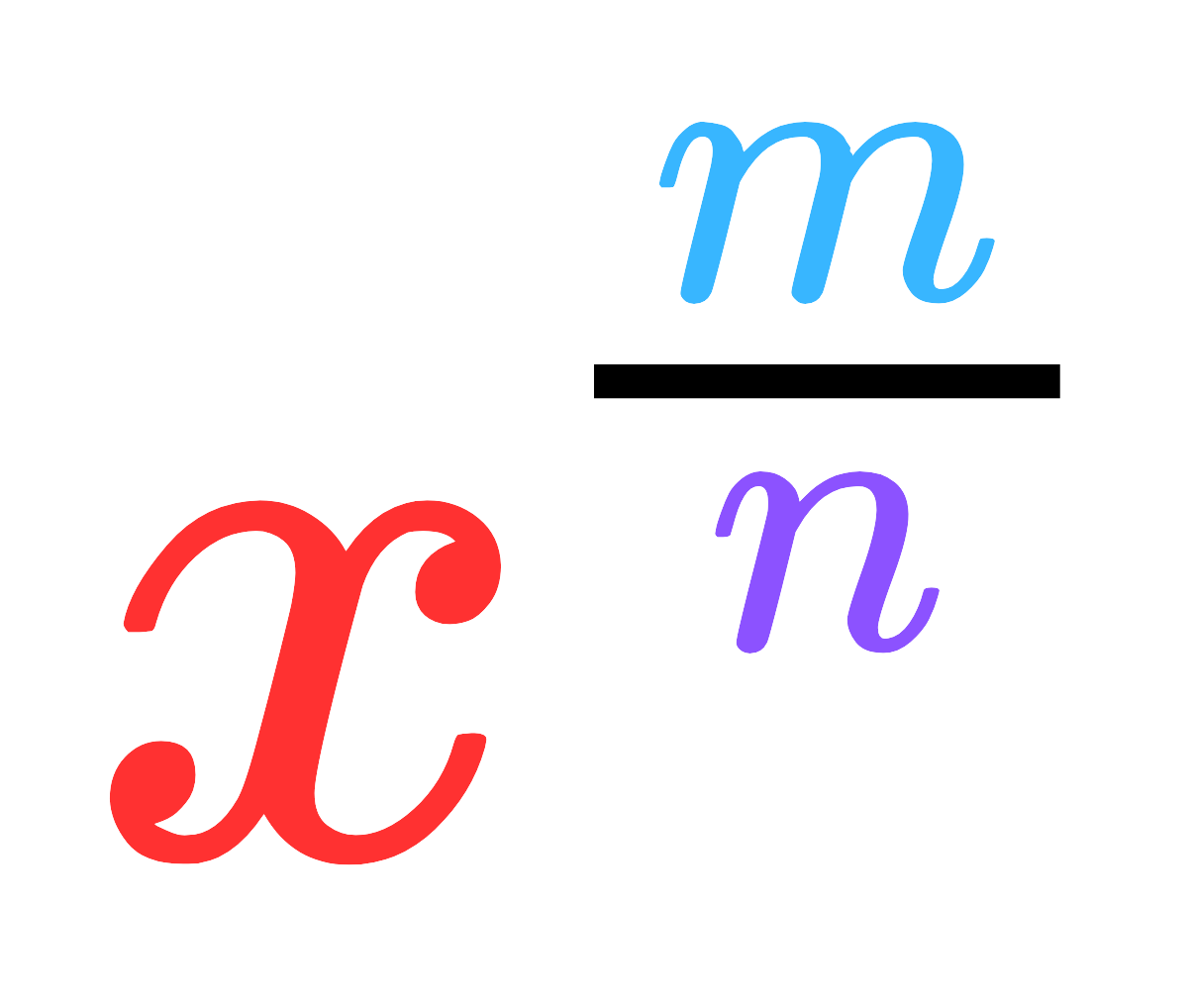
into

Step #3: Find the n-th Root
- If the number is a perfect power, you might see the root immediately (e.g., ∛27 = 3).
- If you’re not sure, use prime factorization.
Step #4: Apply the Power
- After finding the n-th root, raise it to the power m.
Step #5: Combine and Simplify
- Simplify any remaining exponents or multiply out any obvious powers.
 Solved Example 1
Solved Example 1
Problem: Simplify:
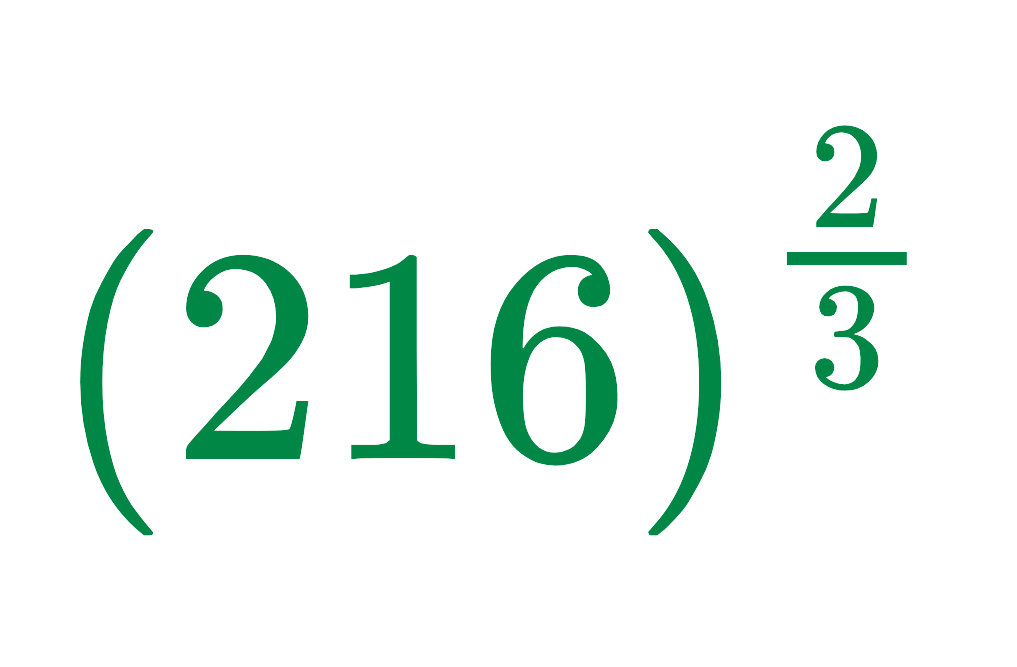
Solution:
Step #1: Identify the Exponent
2/3 means power = 2 and root = 3
Step #2: Rewrite as a Root First

Step #3: Find the Cube Root 2161/3
- Prime-factorize 216:
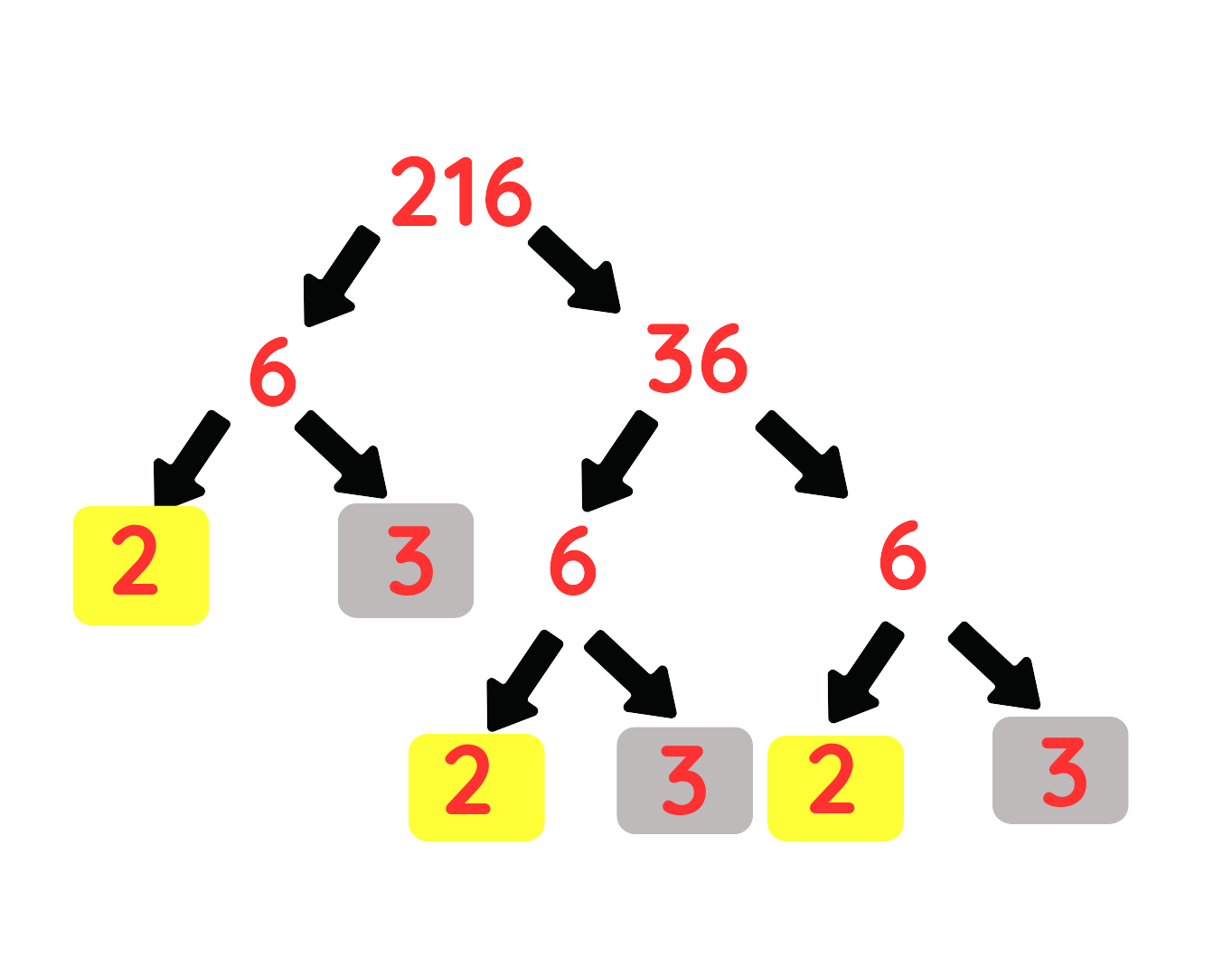
216 = 23 × 33
so,

Step #4: Apply the Power m = 2
(6)2 = 36
Step #5: Final Answer
2162/3 = 36
Using these clear steps—and prime factorization when you’re unsure about the root—makes fractional indices much easier to handle.
In the previous example, 216 was a perfect cube—making it straightforward to take the cube root.
However, not all numbers factor into perfect powers so neatly.
Let’s look at another example with 250, which will result in a simplified radical rather than a whole number.
Solved Example 2
Problem: Simplify:
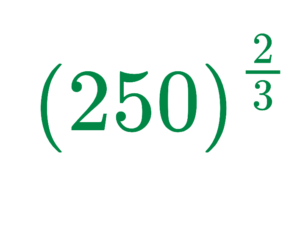
Solution:
Step #1: Identify the Exponent
2/3 means power = 2 and root = 3
Step #2: Rewrite in Root Form

Step #3: Prime-Factorize 250
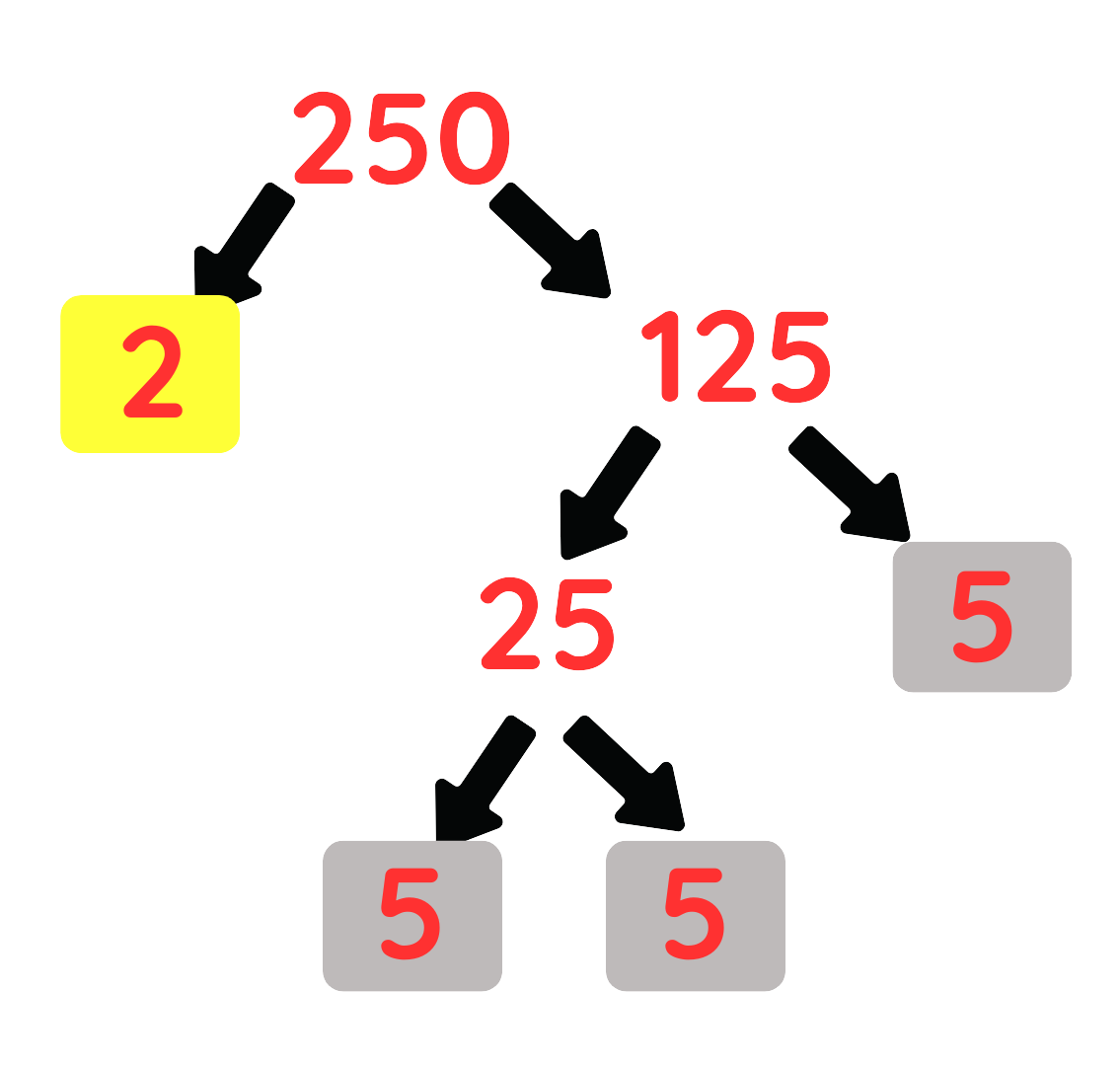
250 = 2 × 125 = 2 × 53
so,

Step #4: Apply the Power m = 2

Step #5: Final Answer
(250)2/3 = 25 ∛4
If you prefer a decimal approximation, then ∛4 ≈ 1.5874
so,
25 × 1.5874 ≈ 39.685
Video Tutorial on Fractional Indices
- Watch this Video Tutorial as we explain step by step to Find Fractional Indices.
Practice Questions and Answers on Fractional Indices
Question 1: Simplify: 1252/3
Question 2: Simplify: 643/2
Question 3: Simplify: 5002/3
Question 4:Simplify: 324/5
Question 5: Simplify: 813/4
Question 6: Simplify: 7292/3
Question 7: Simplify: 1283/7
Question 8: Simplify: 10002/3
Question 9: Simplify: 165/4
Question 10: Simplify: 2434/5
Solutions
Question 1:
Solution:
Step #1: Identify the Exponent
- The exponent 2/3 means the power is 2 and the root is 3.
Step #2: Rewrite in Root Form
- 1252/3 = (1251/3)2
Step #3: Prime-Factorize 125
- 125 = 5³
- ∛125 is 5.
Step #4: Apply the Power (2)
- 5² = 25
Step #5: Final Result
1252/3 = 25
Question 2:
Solution:
Step #1: Identify the Exponent
- The exponent 3/2 means the power is 3 and the root is 2.
Step #2: Rewrite in Root Form
- 643/2 = (641/2)3
Step #3: Prime-Factorize 64
- √64 is 8.
Step #4: Apply the Power (3)
- 8³ = 512
Step #5: Final Result
643/2 = 512
Question 3:
Solution:
Step #1: Identify the Exponent
- The exponent 2/3 means the power is 2 and the root is 3.
Step #2: Rewrite in Root Form
- 5002/3 = (5001/3)2
Step #3: Prime-Factorize 500
- 500 = 2 × 5³
- ∛500 is 5 × ∛2.
Step #4: Apply the Power (2)
- (5 × ∛2)² = 25 × ∛4
Step #5: Final Result
5002/3 = 25 × ∛4
Question 4:
Solution:
Step #1: Identify the Exponent
- The exponent 4/5 means the power is 4 and the root is 5.
Step #2: Rewrite in Root Form
- 324/5 = (321/5)4
Step #3: Fifth Root of 32
- Fifth root of 32 is 2.
Step #4: Apply the Power (4)
- 2⁴ = 16
Step #5: Final Result
324/5 = 16
Question 5:
Solution:
Step #1: Identify the Exponent
- The exponent 3/4 means the power is 3 and the root is 4.
Step #2: Rewrite in Root Form
- 813/4 = (811/4)3
Step #3: Fourth Root of 81
- Fourth root of 81 is 3.
Step #4: Apply the Power (3)
- 3³ = 27
Step #5: Final Result
813/4 = 27
Question 6:
Solution:
Step #1: Identify the Exponent
- The exponent 2/3 means the power is 2 and the root is 3.
Step #2: Rewrite in Root Form
- 7292/3 = (7291/3)2
Step #3: ∛729
- ∛729 is 9
Step #4: Apply the Power (2)
- 9² = 81
Step #5: Final Result
7292/3 = 81
Question 7:
Solution:
Step #1: Identify the Exponent
- The exponent 3/7 means the power is 3 and the root is 7.
Step #2: Rewrite in Root Form
- 1283/7 = (1281/7)3
Step #3: Seventh Root of 128
- Seventh root of 128 is 2.
Step #4: Apply the Power (3)
- 2³ = 8
Step #5: Final Result
1283/7 = 8
Question 8:
Solution:
Step #1: Identify the Exponent
- The exponent 2/3 means the power is 2 and the root is 3.
Step #2: Rewrite in Root Form
- 10002/3 = (10001/3)2
Step #3: Cube Root of 1000
- Cube root of 1000 is 10.
Step #4: Apply the Power (2)
- 10² = 100
Step #5: Final Result
10002/3 = 100
Question 9:
Solution:
Step #1: Identify the Exponent
- The exponent 5/4 means the power is 5 and the root is 4.
Step #2: Rewrite in Root Form
- 165/4 = (161/4)5
Step #3: Fourth Root of 16
- Fourth root of 16 is 2.
Step #4: Apply the Power (5)
- 2⁵ = 32
Step #5: Final Result
165/4 = 32
Question 10:
Solution:
Step #1: Identify the Exponent
- The exponent 4/5 means the power is 4 and the root is 5.
Step #2: Rewrite in Root Form
- 2434/5 = (2431/5)4
Step #3: F Fifth Root of 243
- Fifth root of 243 is 3.
Step #4: Apply the Power (4)
- 3⁴ = 81
Step #5: Final Result
2434/5 = 81

